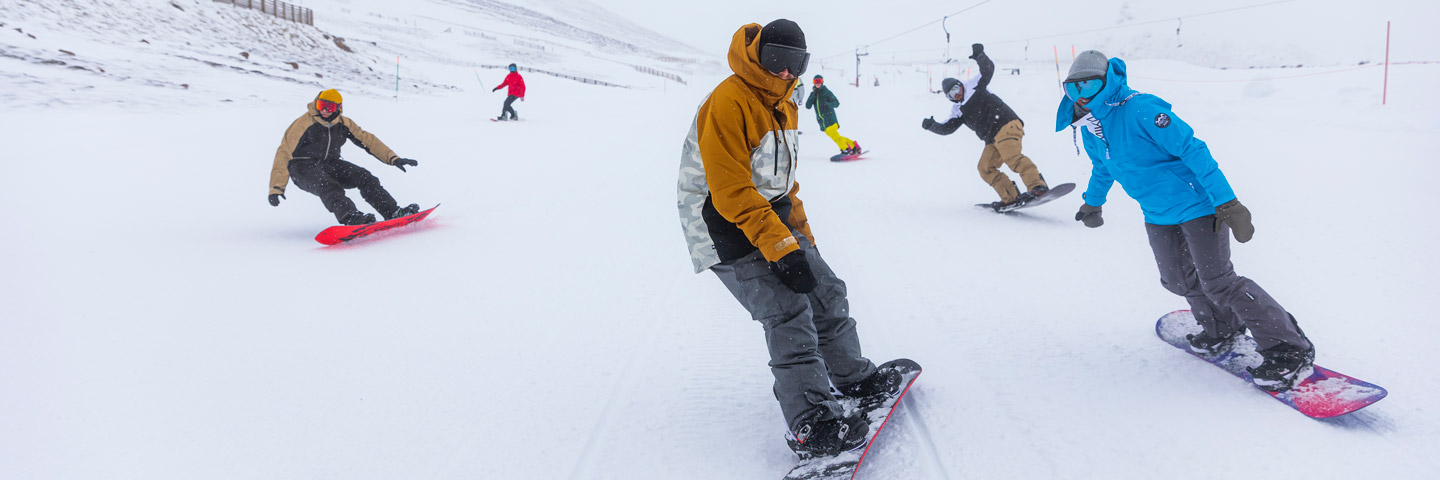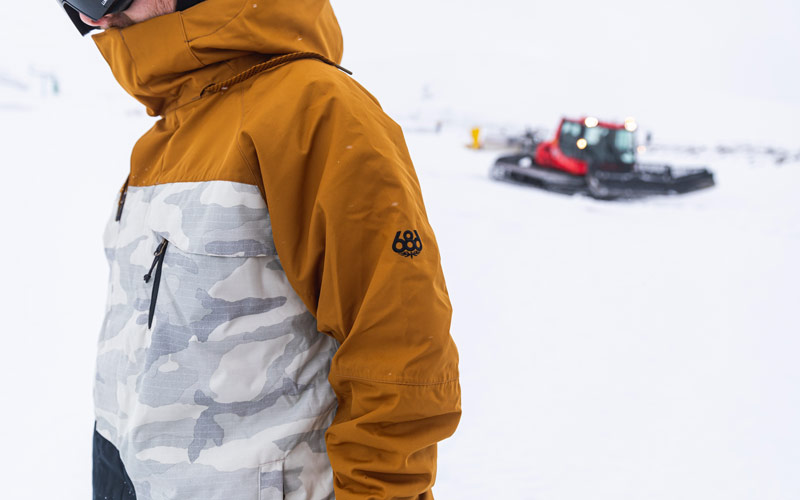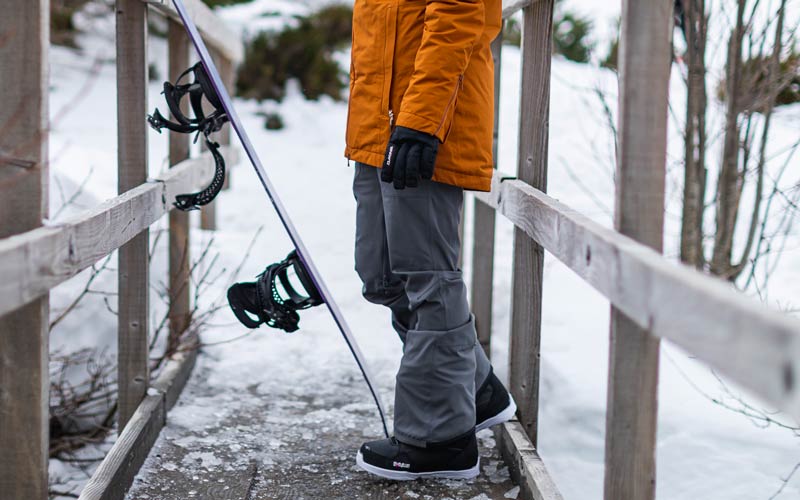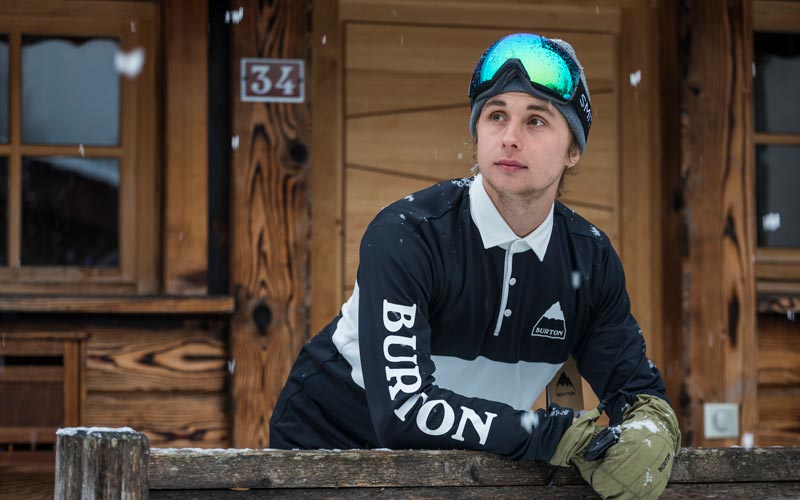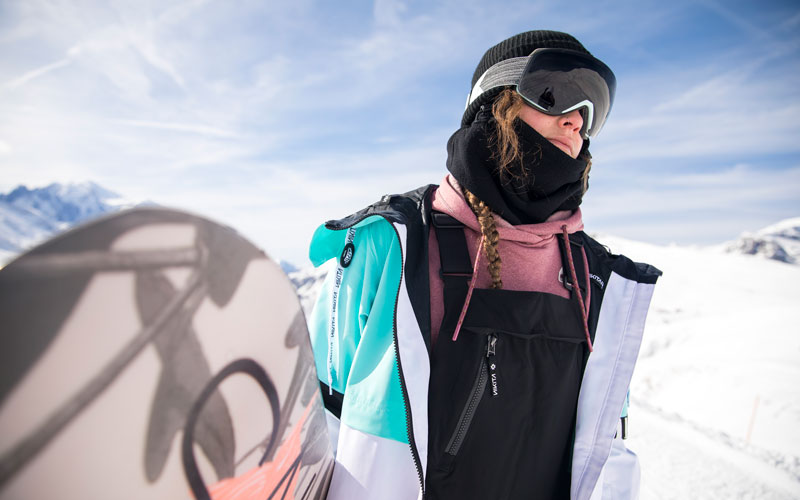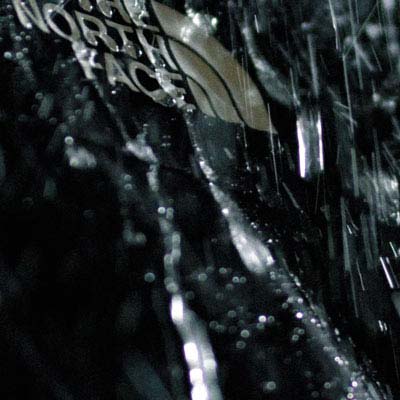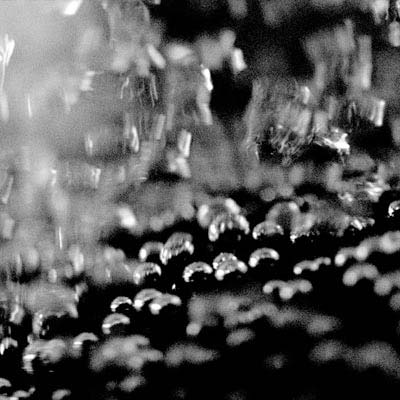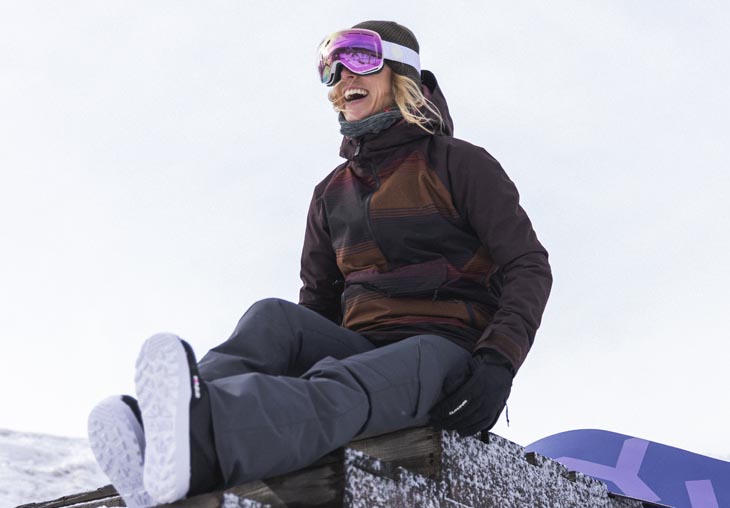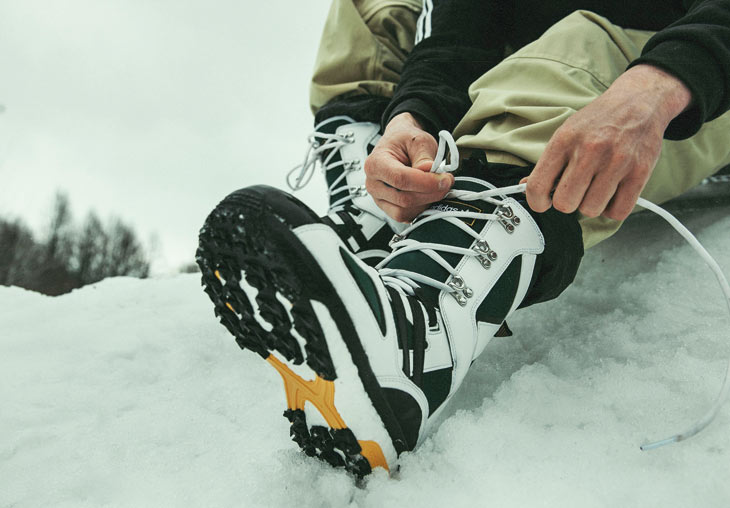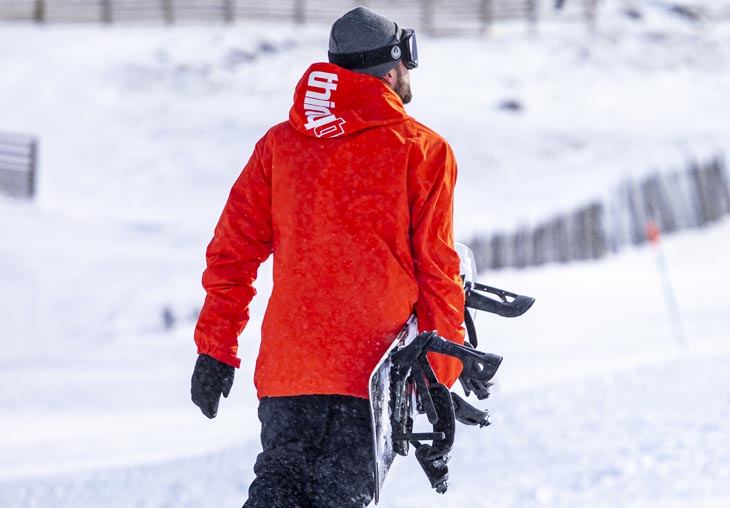Snowboard Clothing Buying Guide
Whether you’re a beginner or a seasoned pro, wearing the appropriate snowboard clothing on the hill is going to keep you dry and comfortable. The alternative is the rather more unpleasant experience of being either wet, cold or too hot. Not fun.
The key to avoiding this is by layering and dressing for the conditions and terrain. This guide lays the foundations of how to dress for snowboarding, which can then be adapted to suit your style and weather conditions, whether you run hot or cold.
Key Features
- Hood - this is a welcome feature when the wind howls on a long lift; make sure it's adjustable and helmet friendly so you can cinch it in when you need to.
- Pit zips - ventilation is great for dumping hot moist air whether you are hiking up to 'earn your turns' in the backcountry or overheating in your first lesson.
- Snowskirt - an inner snowskirt can stop snow shovelling up your back when you fall over.
- Inner security pockets - stash your keys, phone and other valuables here to keep things safe and organised.
- Lift Pass Pocket – pass through lift turnstiles without removing your pass.
- Outer pockets - helps keeps things close to hand.
Shell Jacket – This is a thin, lightweight jacket that utilises a waterproof and breathable membrane along with DWR (Durable Water Repellent) coating to protect you from the wind, rain and snow while remaining highly breathable.
It should be worn as part of a layering system in conjunction with a base layer. If the conditions are particularly inhospitable you can add a mid layer to your outfit for extra warmth.
Hybrid Jacket – A slightly thicker style of jacket that combines insulation with a breathable and waterproof membrane and DWR. This extra insulation normally removes the need to wear a mid layer although it does increase the bulk and weight of the jacket.
Key Features
- Relaxed fit - snowboarding pants should fit well but be roomy enough for comfortable riding.
- Pockets - for all your essentials; zips secure the contents.
- Inner snow gaiters - make sure these fit over your boots to stop snow riding up the inside of your trouser leg.
- Venting - zipped vents (general on the inside leg) allow you to dump heat, ideal for spring riding.
- Adjustable trouser cuff - keeps the trousers in place over your boots and allows them to be cinched up so they don’t get ripped when you're off your board.
Shell Pants – Lightweight and highly breathable, these pants are made from a waterproof & breathable membrane and a face fabric coated in DWR to protect you from the elements. Base layer pants should be worn with these to add warmth on colder days.
Hybrid Pants – Waterproof and breathable pants that have a thin layer of insulation to help keep you warm when not moving. Base layers pants can be added for extra warmth when it’s especially cold.
Key Features
- Breathable – breathable fabric allows excess hot air to escape.
- High warmth to weight ratio – the layer provides lots of warmth with little bulk.
- Hood – some mid layers come with a hood for extra protection on cold days.
- Elasticated hem – helps to keep the layer in place and prevents snow entering.
- Thumb loops – stops the arms of the layer from slipping and creates a closer fit.
Mid layers - Come in a variety of fabrics, styles and designs from thin fleeces for spring riding through to thicker insulated pieces for the depths of winter. If you are wearing one as part of layering system it needs to be breathable otherwise it negates the benefits of all the other layers.
Key Features
- Breathable – breathable fabric allows excess hot air to escape.
- High warmth to weight ratio – the layer provides lots of warmth with little bulk.
- Wicking – sweat is wicked away from the skin for comfort and prevents you from getting cold.
- Soft feel– the fine fabrics sit comfortably next to your skin.
- Odour management – merino wool traps odours so it can be worn for more days.
Synthetic - Base layers made from synthetic fabrics help to regulate your temperature and moisture management. They wick away moisture from your body and insulate against the cold while allowing excess heat to escape.
The main benefits over merino base layers are that synthetics are easier to clean/quicker drying, more durable and generally lighter in weight and cheaper.
Merino - Merino base layers regulate your temperature and absorb moisture which is expelled it into the air, keeping you dry and comfortable. Super-fine threads provide next-to-skin comfort. The spring-like structure of the fibres adds natural stretch and are great at trapping air for insulation.
Compared to synthetic base layers merino is naturally odour resistant and more adaptable to temperature fluctuations.
Waterproofing/Breathability
At The Snowboard Asylum, our entry-level snowboard clothing has a minimum waterproof/breathable value of 5k and 5k, mid-range 10k/10k with the top-end delivering 20k/20k. The higher the values the greater the resistance to rain and the more breathable the clothing will be.
GORE-TEX test their fabrics using a unique method but they outperform most on the market and deliver waterproof and breathable levels far above 20k/20k.
It's worth noting that sewing a garment together puts holes in the waterproof/breathable fabric. Manufacturers combat this by factory sealing the inside face of the seams using narrow waterproof tape. Entry-level and mid-range clothing will generally have all the critical seams sealed whilst top-end clothing will be fully taped.
Waterproofing
Waterproofing is rated using a ‘hydrostatic head’ test where a fabric’s resistance to water pressure from a vertical column of water is rated in millimetres… giving a water resistance rating of, for example, 10,000mm. Some call fabrics with a hydrostatic head of 1,000mm waterproof but in a real-world environment wear and pressure would make such fabrics leak quickly.
Breathability
Breathability or MVTR (Moisture Vapour Transmission Rate) is measured by the rate at which water vapour passes through a square metre of fabric over a 24 hour period. This gives a breathability rating, for example, 10,000g/m2/24 (often abbreviated to 10,000g). You will see us abbreviate fabric performance further to 10k/10k for example.
If you spend a lot of time riding deep snow in variable and wet conditions, or frequently hike in the backcountry, then you need a fabric with a high waterproof & breathability rating. Layered clothing systems are the best options for versatility and practicality. The system usually comprises of a wicking base layer to drive moisture away from your skin and out through your outer layers, mid-layer fleece or in coldest weather Primaloft or down fill jacket for extra warmth, topped with a high performance waterproof and breathable outer layer. GORE-TEX fabrics rule in this high-end outerwear category.
If your aspirations are less extreme and you rock the resorts a couple of times a season, mostly playing on the pistes with occasional lift accessible off-piste, then you can rely on any of the clothing in our range to deliver the performance and looks that you’ll want. Under your outerwear a clothing system is still the best way to go, wicking base layers (thermal underwear) are always better than a cotton tee and a thin fleece mid-layer is much better than a cotton jumper.

